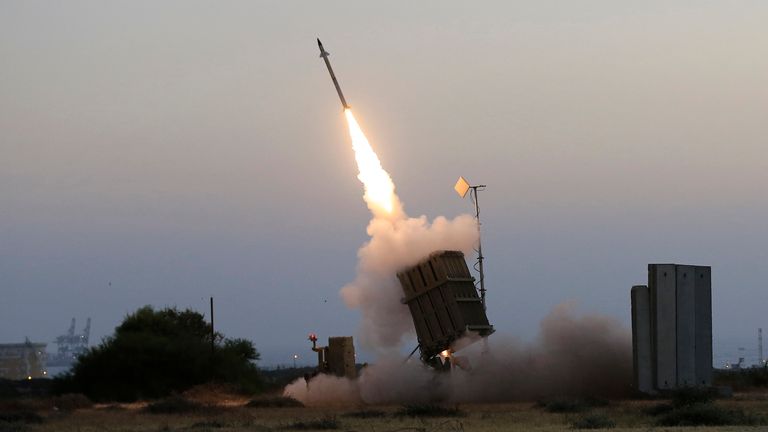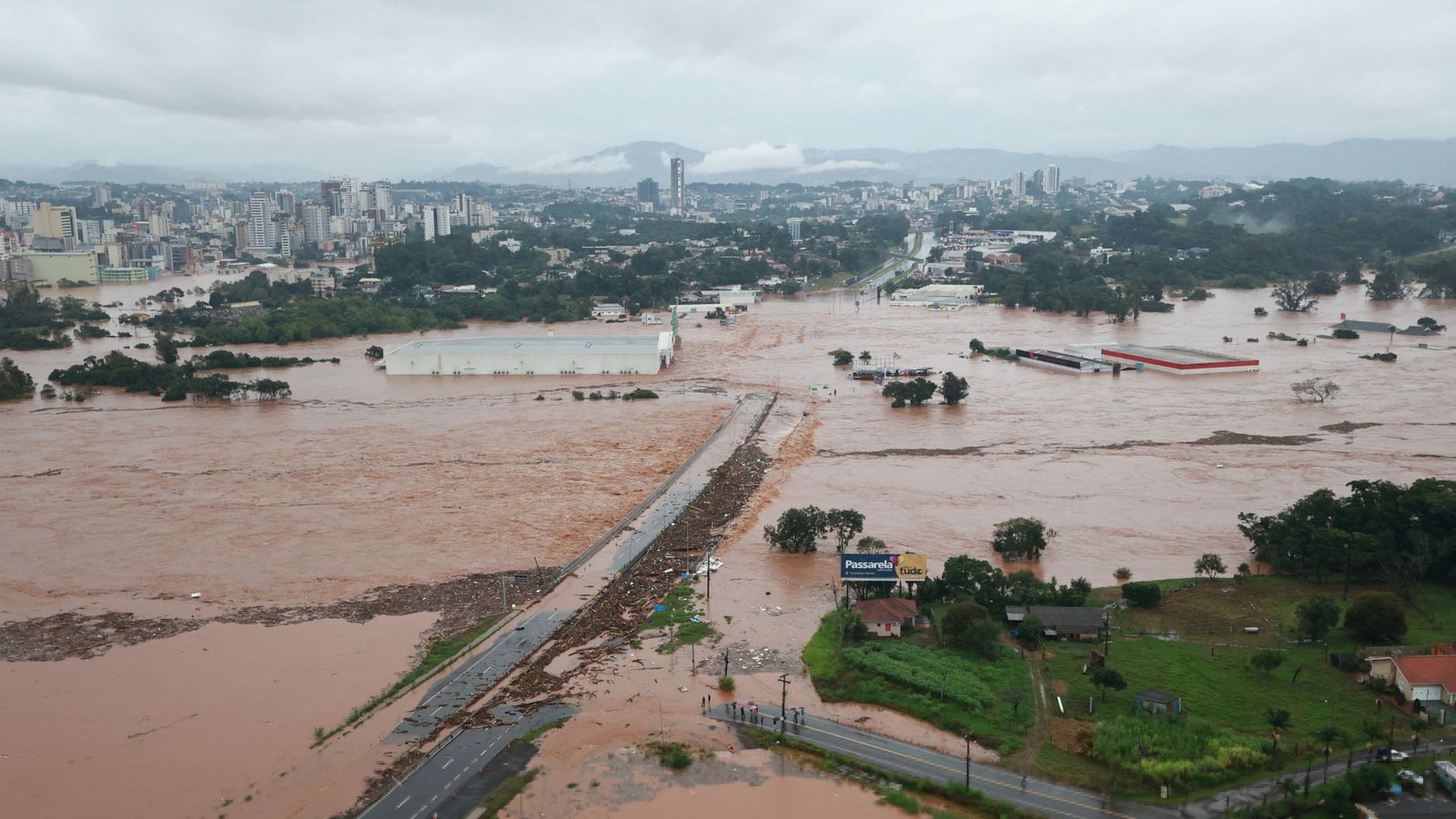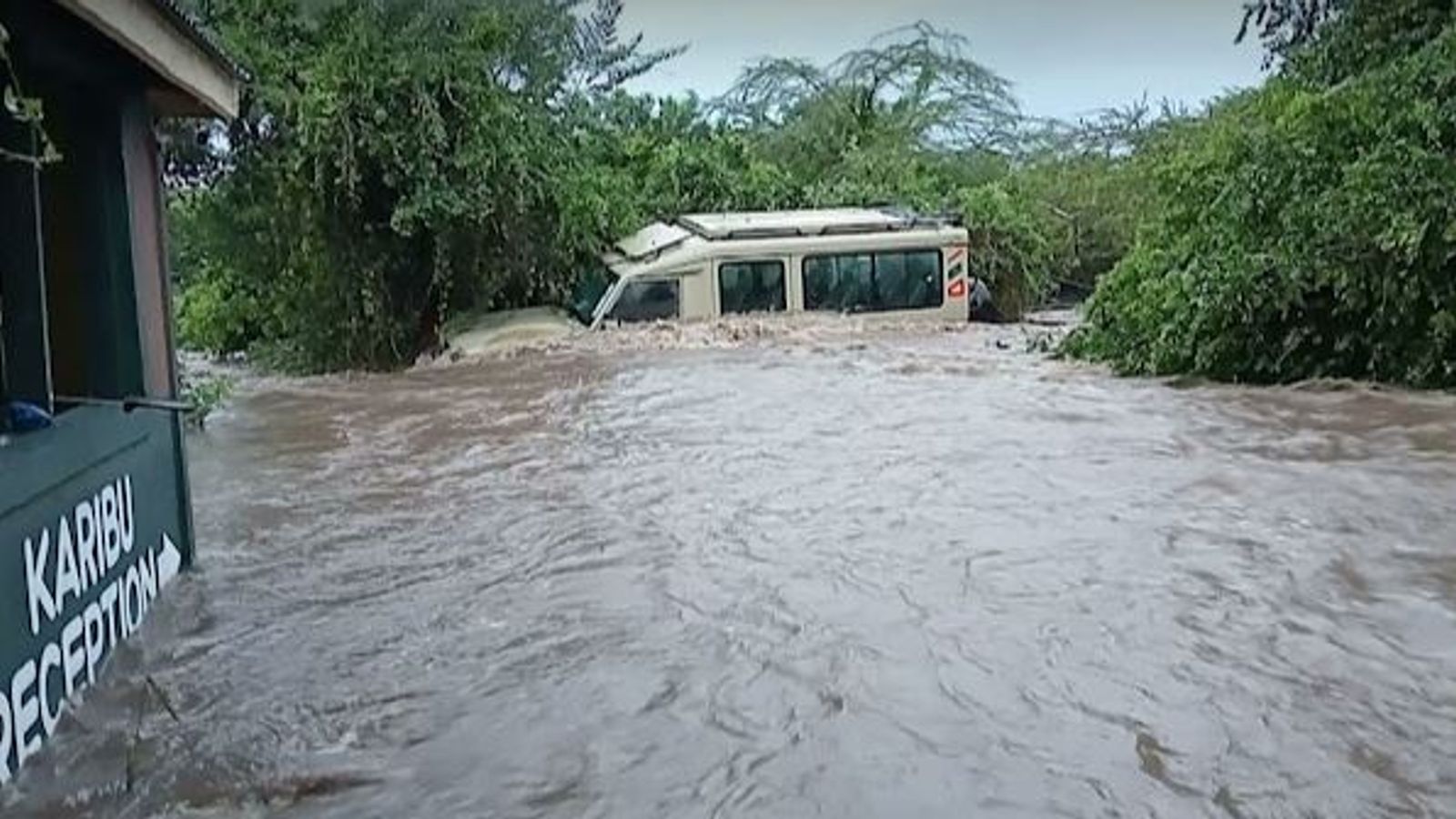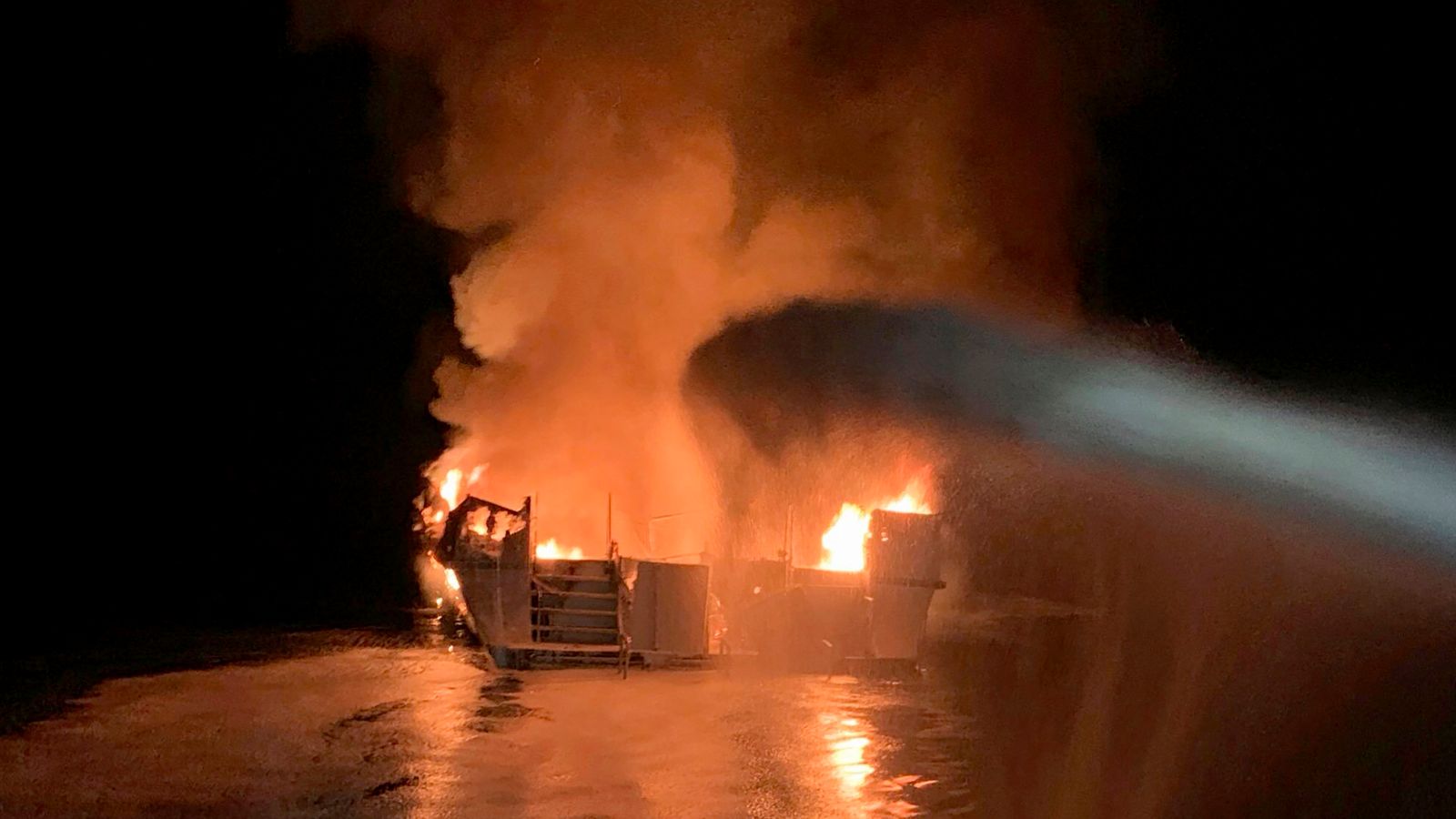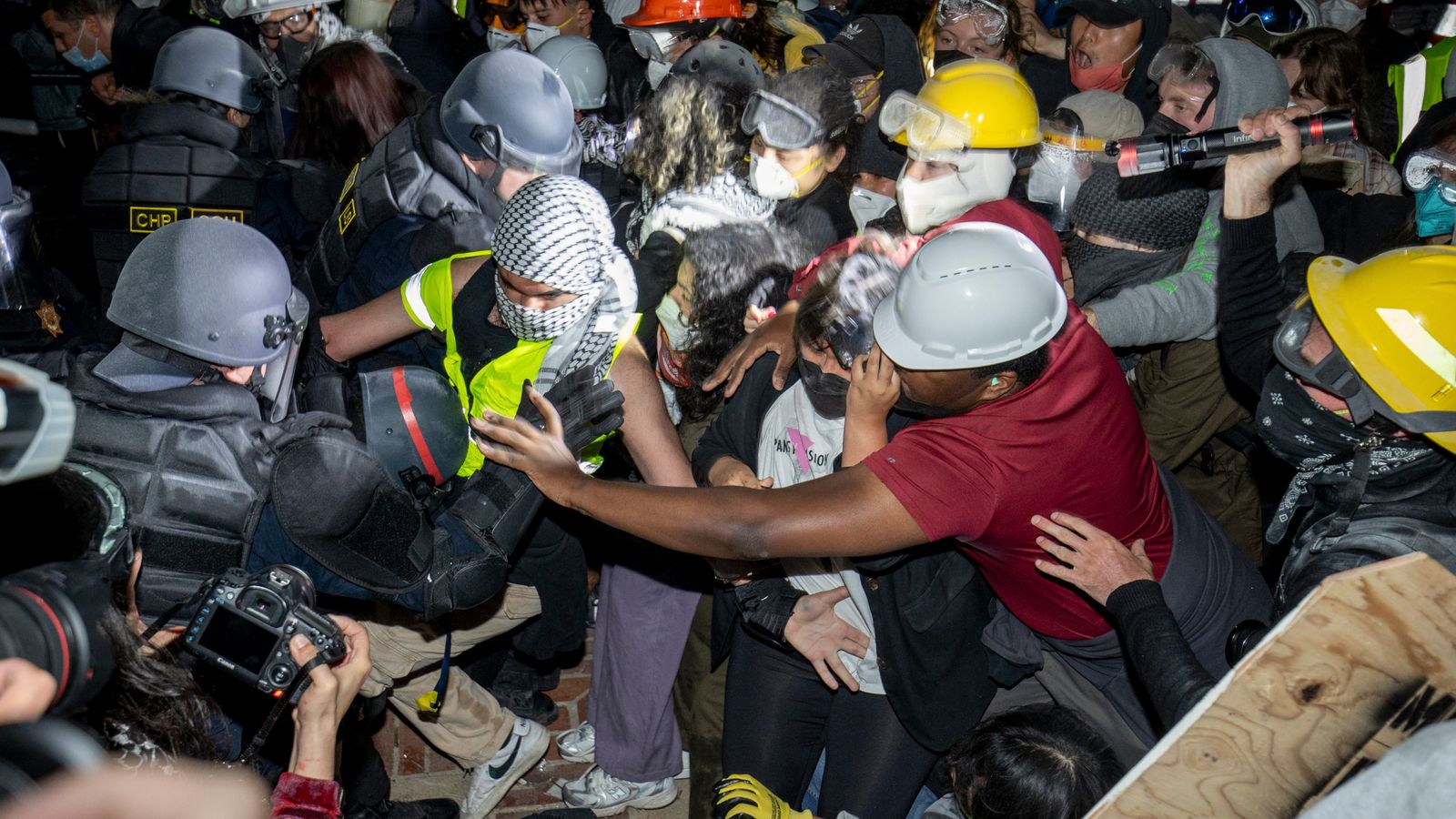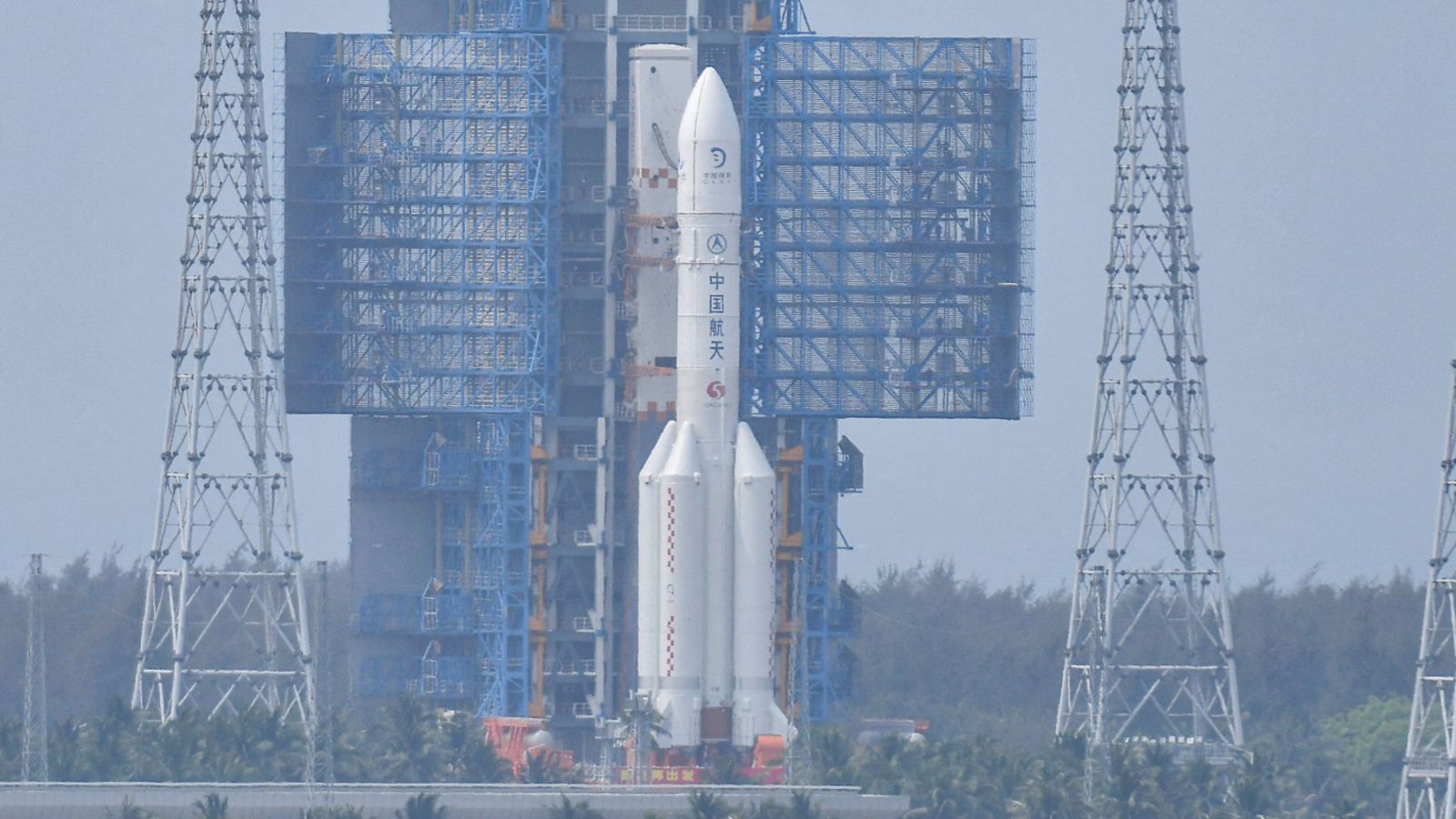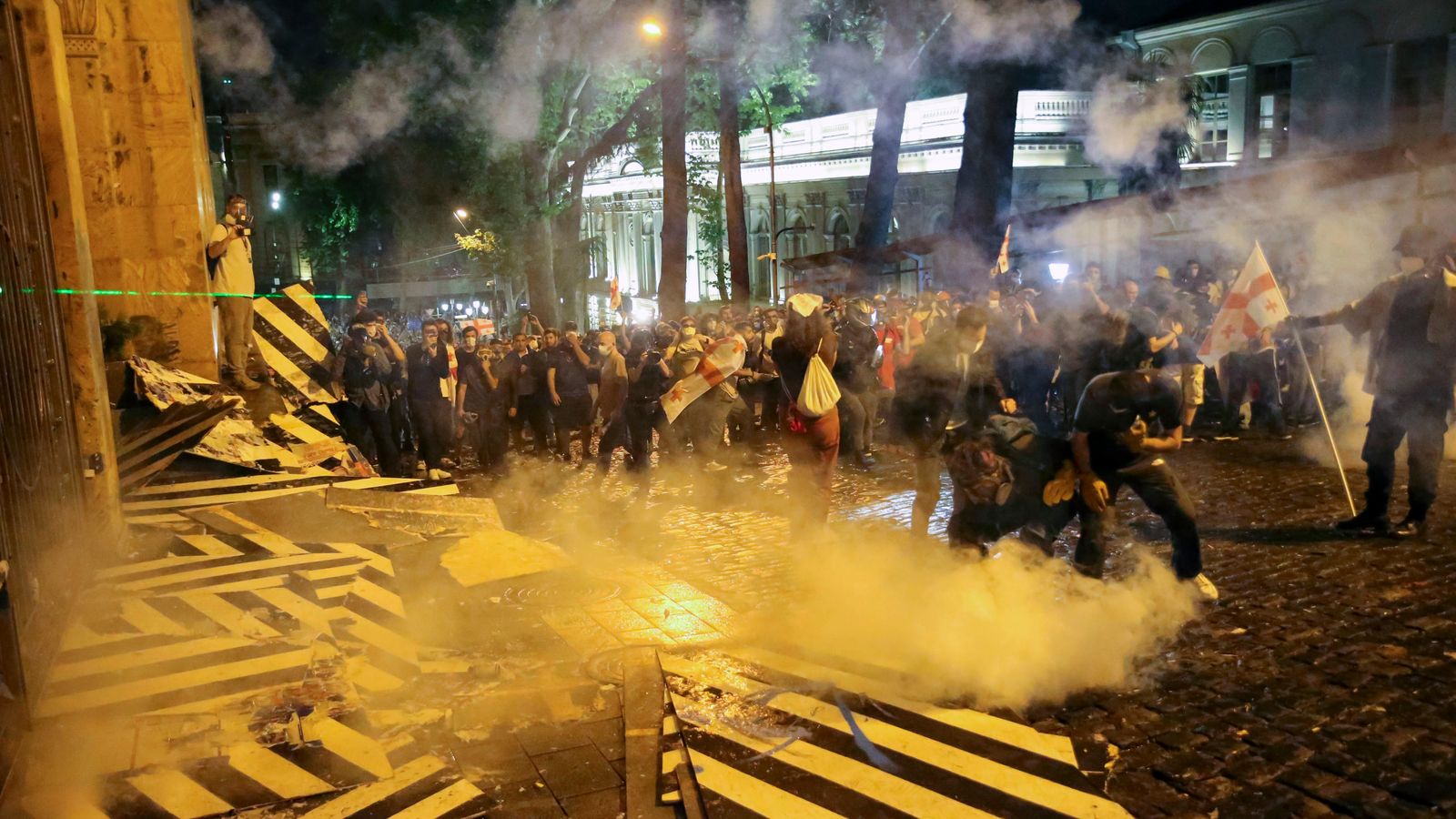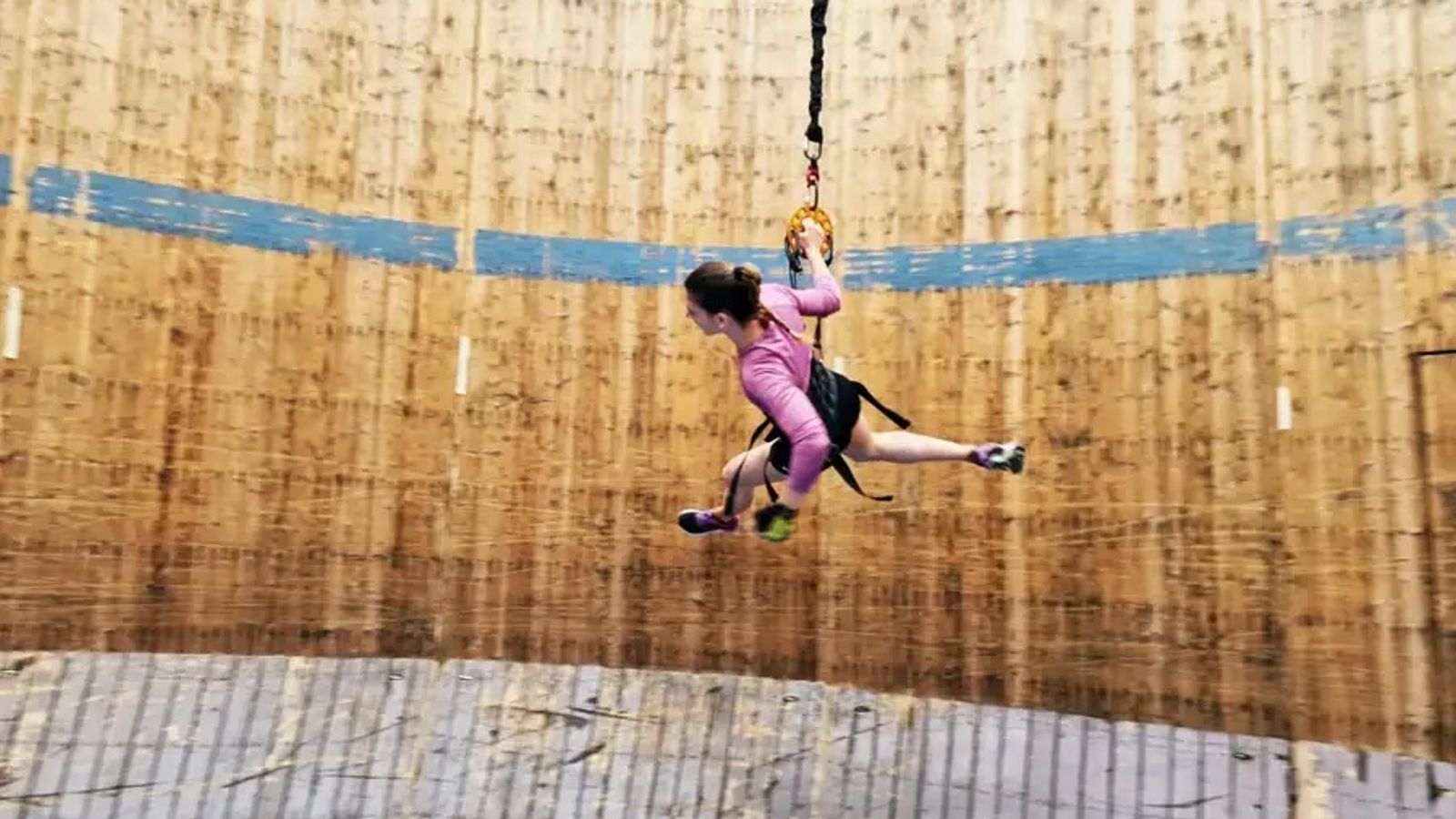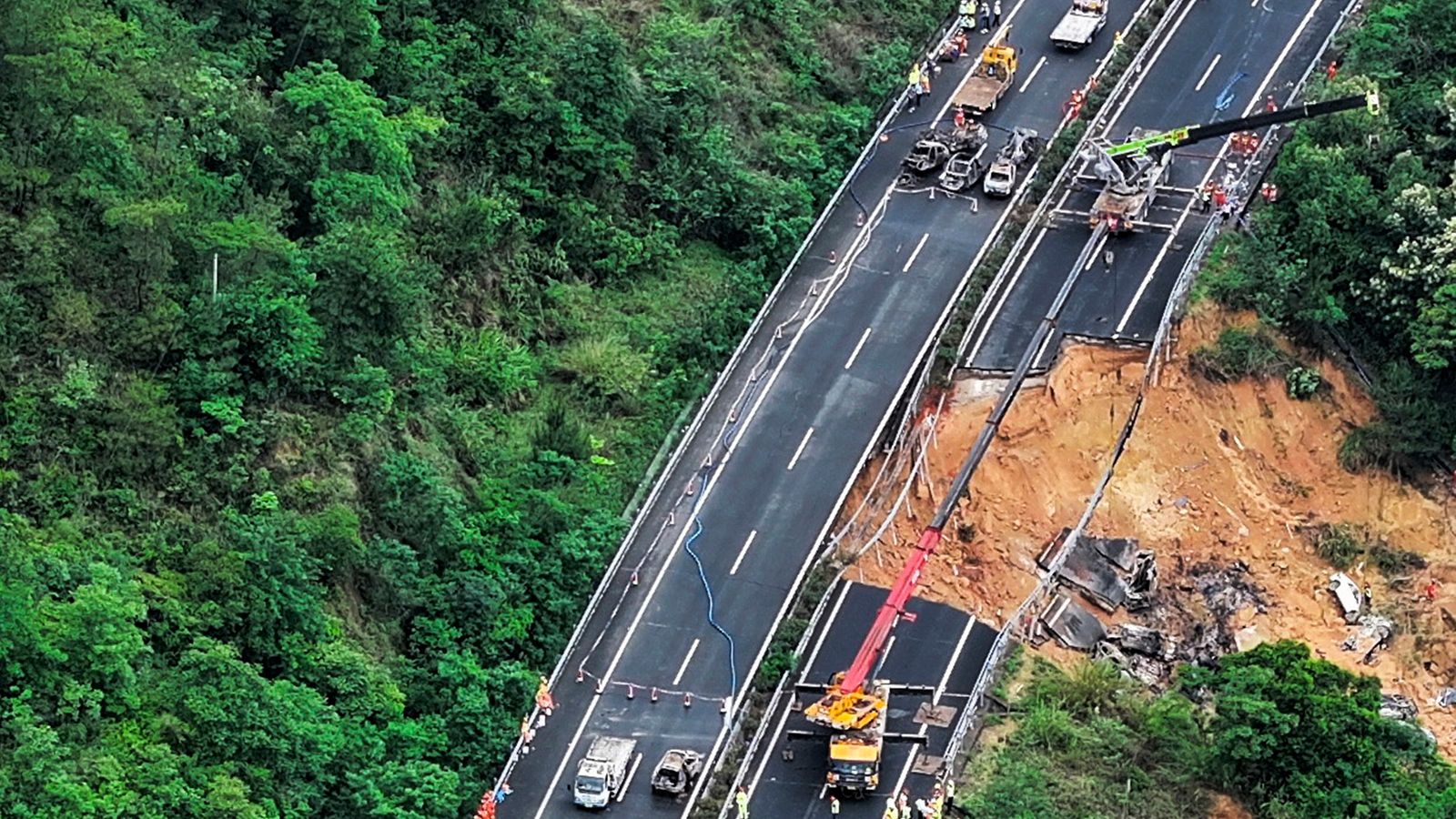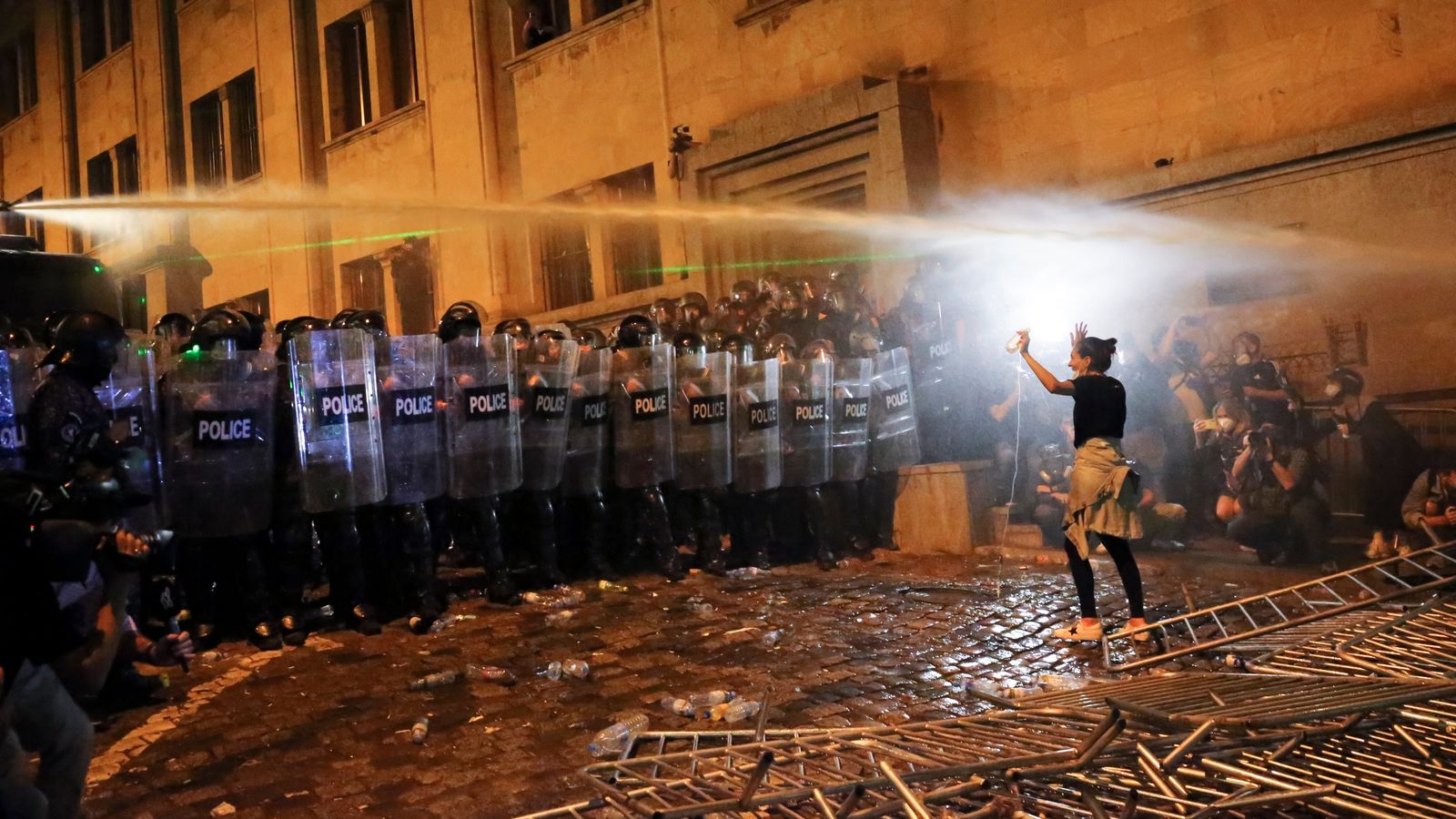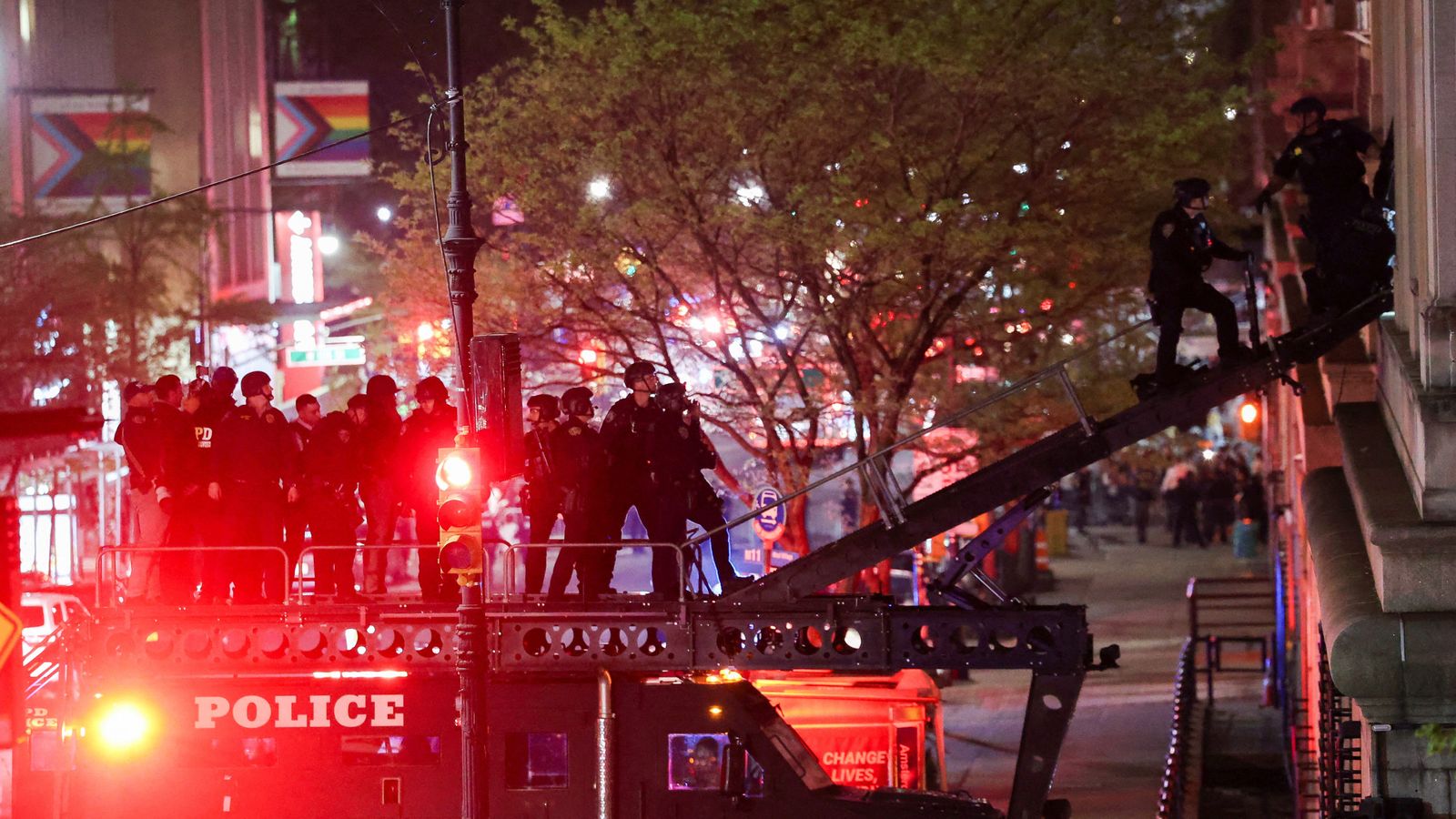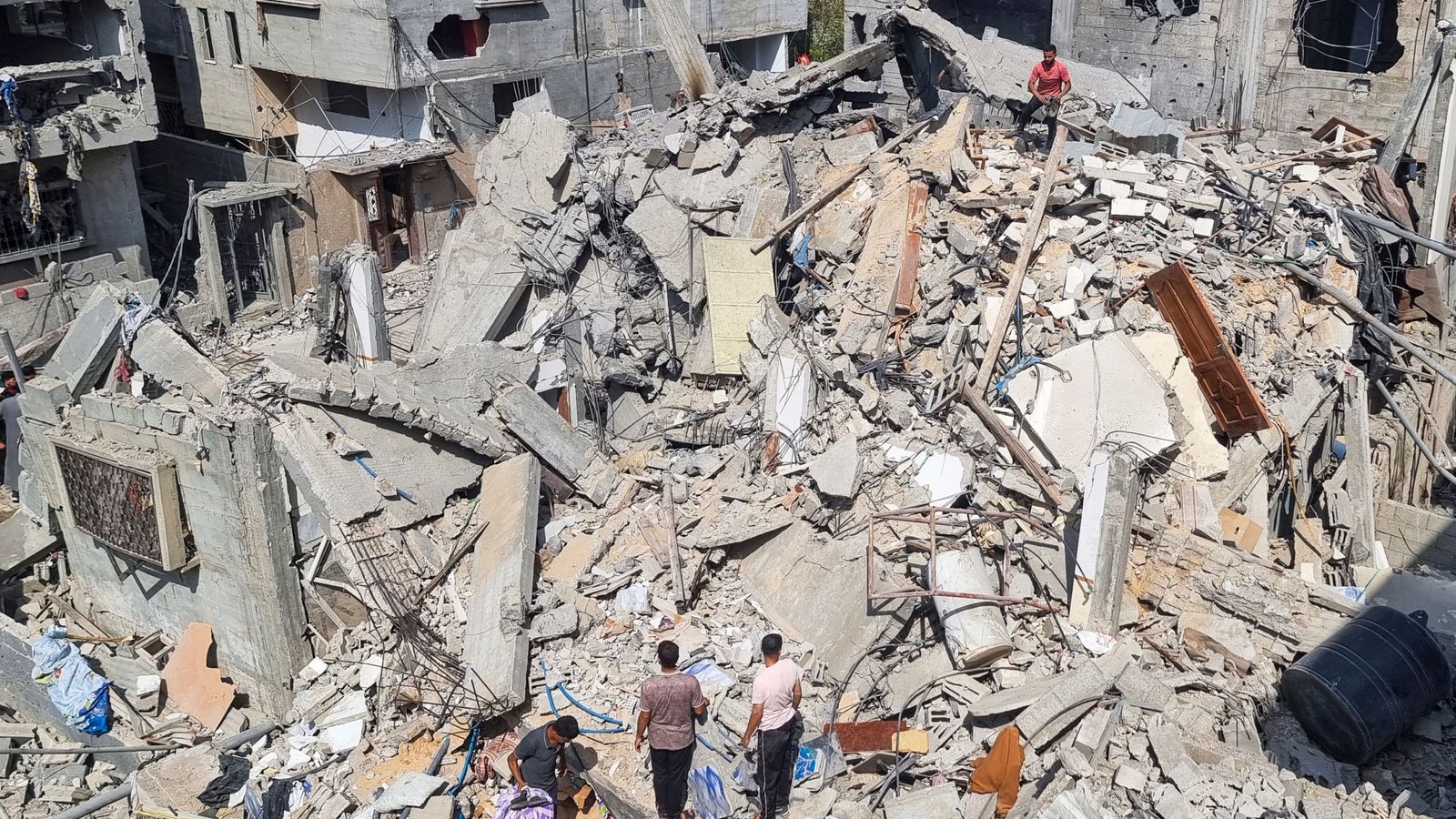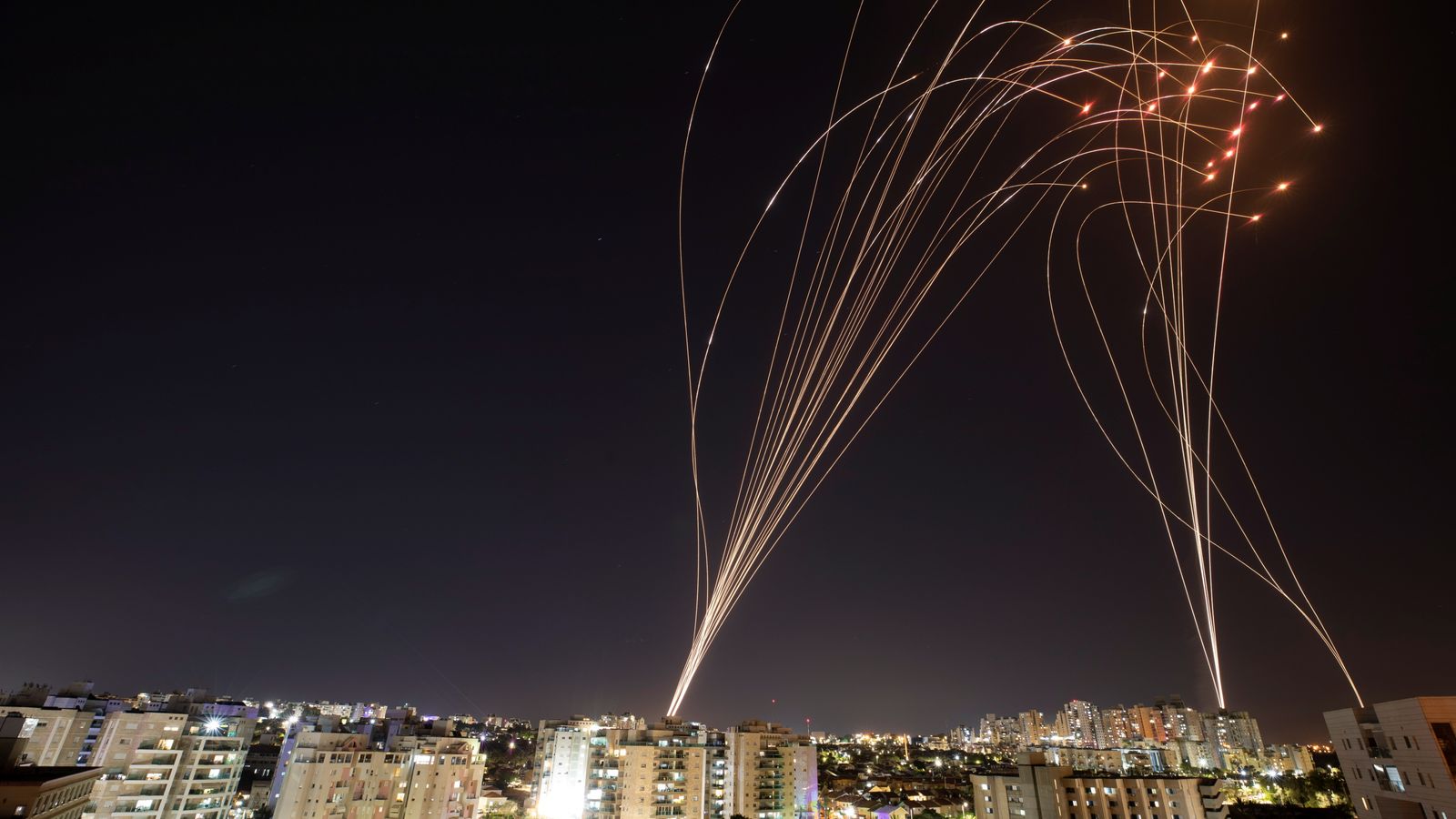
Israel’s air defence system is one of the most effective in the world.
The Iron Dome began operating in 2011, largely in response to the 2006 war that ended with Hamas taking control of Gaza the following year.
‘Situation still unfolding’; Middle East latest
It uses radars to detect and intercept short-range rockets, missiles and drones.
Mobile launchers and ‘battle management centres’
The Iron Dome was developed by Israel’s state-owned Rafael Advanced Defence Systems with US support.
The system consists of a series of truck-towed mobile units placed strategically throughout the country.
When their radars detect a threat, the information is sent to a ‘battle management centre’ where military personnel analyse it, anticipating its path and impact point, and decide which missile launcher to use to intercept it.
Counter missiles are then fired directly at the threat – or near it – so the shrapnel can neutralise it.
Read more:
Everything we know about Iran attack
Biden reaffirms ‘ironclad’ US support
Analysis: All-out war – or not?
The dome, known as Kippat Barzel in Hebrew, reacts within a matter of seconds and is manned 24 hours a day.
Originally it was designed to protect cities and strategic sites against missiles with a range of 2.5 and 43 miles, but it is thought to have been expanded.
More than 90% effective
It has consistently blocked more than 90% of rockets fired towards Israel, with a naval version deployed to protect ships and other assets in 2017.
This is why the number of Israeli deaths in the current war with Hamas has remained low, while those in Gaza continue to increase.
Soon after it began operating it became the envy of other militaries.
Rafael has said it has supplied at least two Iron Dome batteries to the US army, with Ukraine having made a similar request.
Saturation point unknown
Although extremely effective, it is not perfect. The dome has a saturation point at which it would become overwhelmed, but this exact level is unknown.
Iran’s attack on 13 April saw 170 drones, 120 ballistic missiles and 30 cruise missiles used, “99%” of which were intercepted by the Iron Dome, according to Israel Defence Forces (IDF) data.
When war broke out on 7 October last year, 3,000 rockets were fired from Gaza at once.
Over the course of Israel’s 50-day war with Gaza, 4,000 missiles were fired in total.
Israel also has medium and long-range defence systems, known as David’s Sling, Patriot, and Arrow.
Doonited Affiliated: Syndicate News Hunt
This report has been published as part of an auto-generated syndicated wire feed. Except for the headline, the content has not been modified or edited by Doonited

